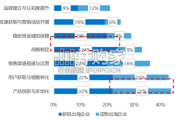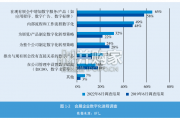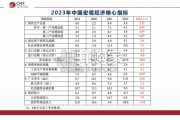2020年以来的最新一轮出海潮与以往阶段存在显著区别:随着中国品牌逐渐 在海外市场站稳脚跟,中国出海企业从探索边缘赛道转向对游戏、汽车、短 视频、电商...
2024-03-08 20 经济报告
China’s consumption-based emissions are high relative to the level of GDP because of the energy-intensive structure of the economy. The most energy-intensive commodities — steel, cement and non-ferrous metals — are predominantly produced for the domestic market. Furthermore, China is also a major importer of emissions-intensive commodities. Emissions embedded in trade peaked around the 2007 global financial crisis, and have been falling since then. In other words, net exports have not contributed to China’s emissions growth since 2008. A major focus of China’s climate targets has been reducing the CO2 intensity of the economy, i.e. CO2 emissions per unit of GDP. China has made rapid progress in this regard, but from a very high starting point compared to the average of other non-Organisation for Economic Co-operation and Development (OECD) countries, let alone developed economies. In comparison to other emerging economies that have achieved rapid economic growth in the past few decades, China has followed a far more CO2-intensive growth trajectory, due to the high share of coal in the energy mix and the highly energy intensive structure of the economy. The slowdown in CO2 emission growth since 2013 has produced some convergence, but emissions per capita remain more than twice as high as those of most other emerging countries at the same level of GDP per capita.

标签: 经济报告
相关文章

2020年以来的最新一轮出海潮与以往阶段存在显著区别:随着中国品牌逐渐 在海外市场站稳脚跟,中国出海企业从探索边缘赛道转向对游戏、汽车、短 视频、电商...
2024-03-08 20 经济报告

近年来,全球沿海国家和地区充分发挥港口的战略性引领带动作用,大力推进 港口经济发展,对于拉动区域经济增长、提升经济发展水平发挥了重要作用。本次 研究在...
2024-03-07 19 经济报告

人员流动是展览业发展最基础的要素,疫情期间,国际人员往来受限极大阻碍了 展览活动特别是国际展览活动的开展。2023 年以来,随着中国采取“乙类乙管”措...
2024-03-07 15 经济报告

从具体指标数据来看,我们增长相对不足的地方主要在于需求侧,即投资、消费和出口。 2023年1-11月,受到房地产投资的影响,投资仅仅增长了2.9%。民...
2024-03-06 13 经济报告

百年未有之大变局的另一面,是百年未有之大机遇。“面向未来,我们要站在统筹中华民族伟大复兴战略全局和世界百年未 有之大变局的高度,统筹国内国际两个大局、...
2024-02-26 47 经济报告
最新留言